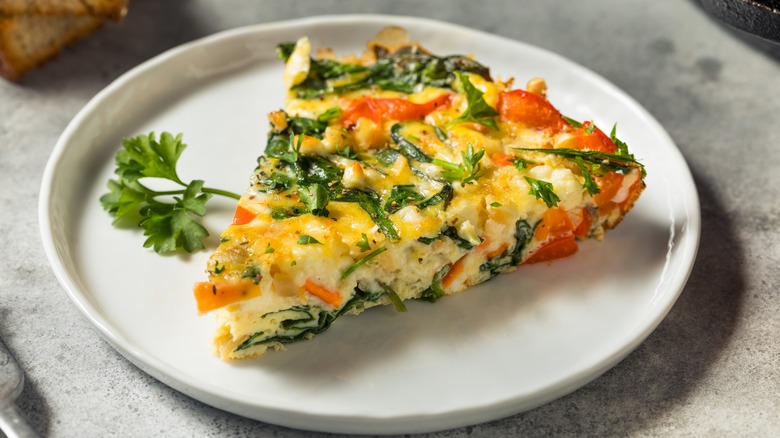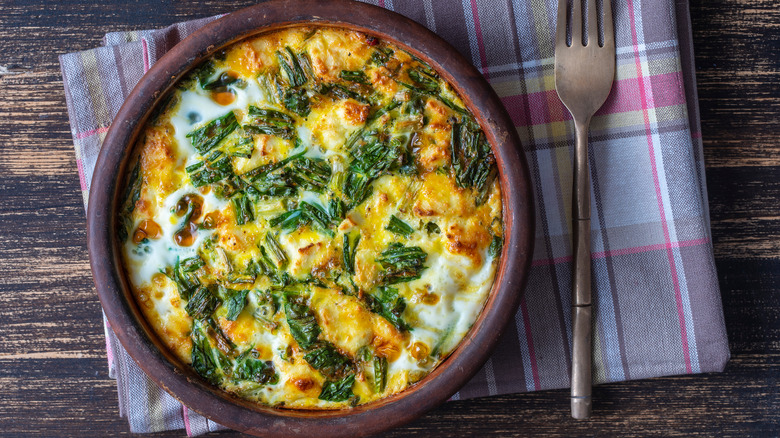When Making A Frittata, Oven Time Is Your Biggest Mistake
There are few breakfast situations that a box of eggs can't take care of. Hungover? Fry up a quick sunny side up. In need of something more filling? Load it with veggies and make an omelet. Want to show off your culinary skills? Whip up the silkiest scrambled eggs. Got a group the size of a soccer team to feed? A frittata will come to the rescue!
Known as the Italian omelet, a frittata is just as easy to make as its French cousin. Not only are frittatas versatile enough to accommodate leftovers, but they can also be bulked up with veggies, cheese, meats, and all kinds of fillings and can be made in big batches for multiple servings. As convenient as frittatas are, however, they can also be massively off-putting. The texture of a frittata is a tricky one to nail and the biggest mistake people tend to make when cooking a frittata is overestimating the amount of time that it needs in the oven.
A well-cooked frittata is light and fluffy enough that it resembles the texture of a just-set custard. More often than not though, people tend to focus more on cooking the frittata long enough so that its crust is golden brown in color and in doing so, the custard-like texture inside overcooks into a dry and rubbery sponge that is nothing that a frittata should be.
Don't overcook a frittata
The sign of a well-cooked frittata is its texture and when it comes to cooking with eggs, every second matters. A frittata should be cooked till the insides are no longer runny but not so much that it turns into a dry and rubbery sponge. To get that just-set consistency, bake the frittata till its edges have a golden-brown hue.
Start checking the frittata at least a few minutes before it's supposed to be done and when in doubt, run a knife or a toothpick through the center. If the eggs are still raw, the frittata could use a few more minutes. If they have just about set, it's time to remove the frittata from the oven and let it rest for five minutes before you serve it up.
The oven time that a frittata requires also depends on the ratio of eggs to the size of the skillet that you cook them in. Too many eggs in the wrong skillet could make a frittata thicker whereas fewer eggs in a bigger skillet may make a thin frittata that may be particularly susceptible to overcooking. As a general rule of thumb, Rachel Ray recommended cracking an egg for every inch of the skillet that you're using (via Facebook). That is, to make the perfectly-sized frittata in a six-inch pan, you'll also need six eggs. This will go a long way in helping you nail the oven time for an evenly-cooked frittata.

